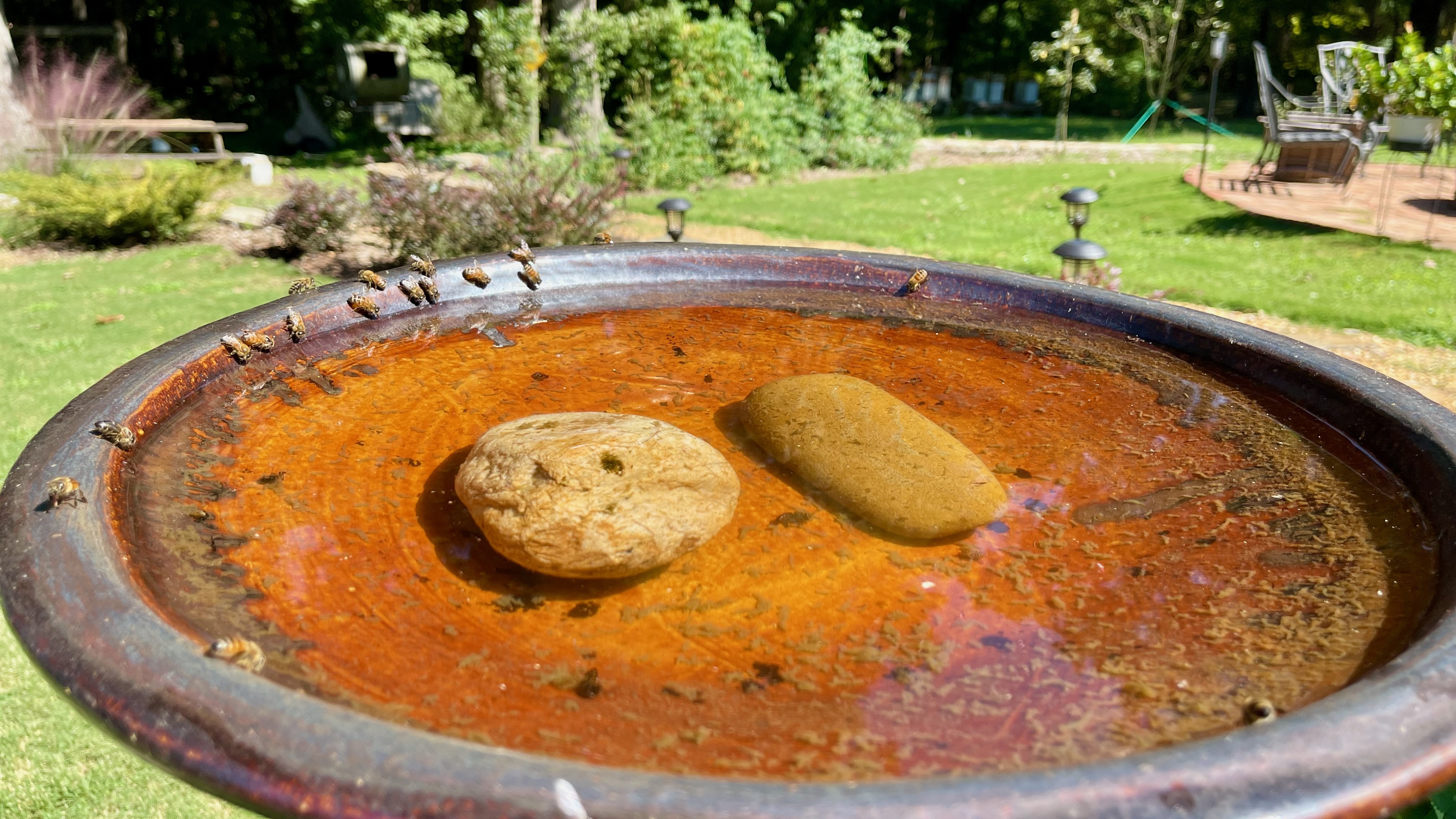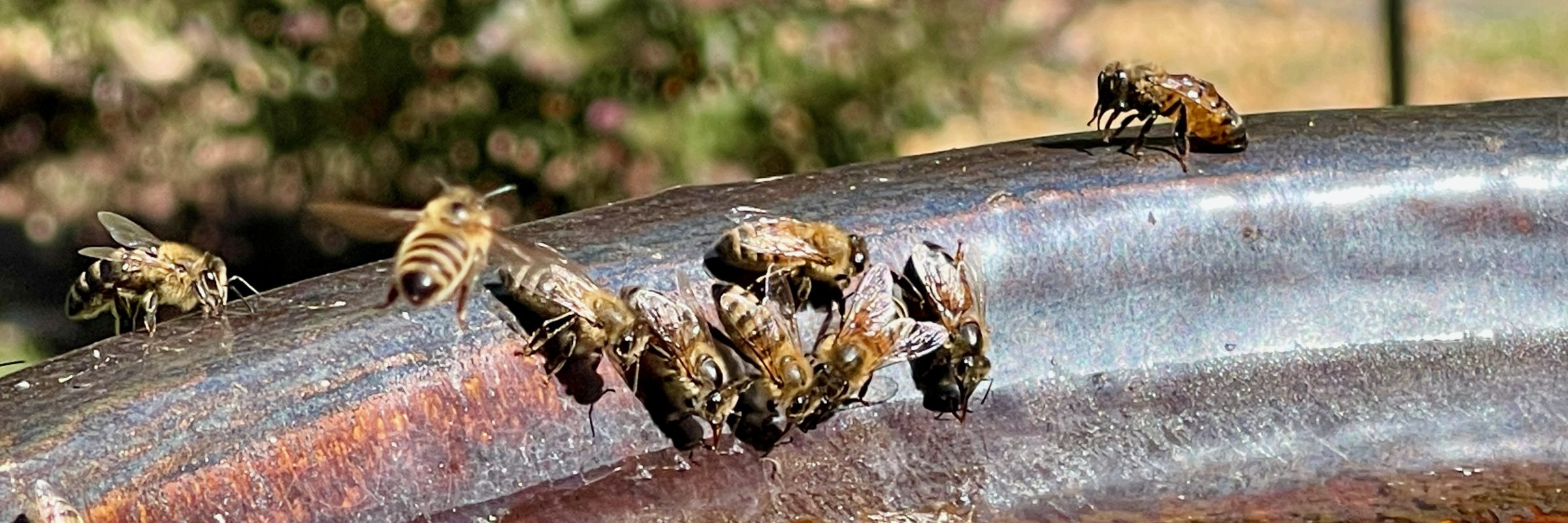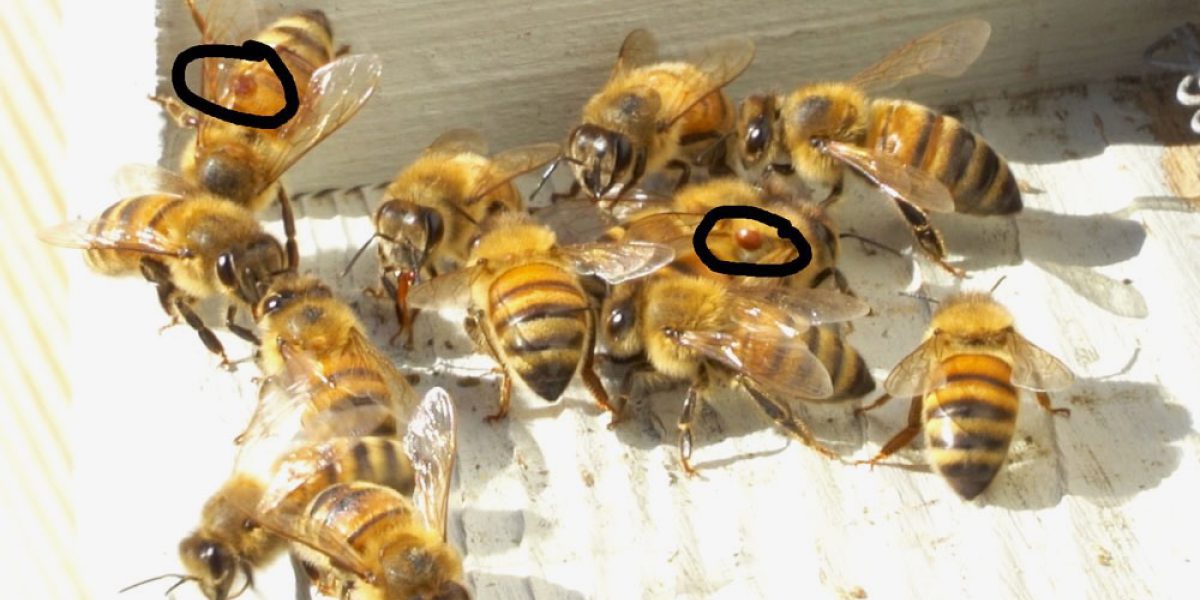article · Beekeeping · by The Backyard Farmer · Sep 18, 2023
Honey bees are amazing creatures in so many ways. The organization of work in the hive and the dedication to the good of the colony are inspiring. It begins with the Queen, who lays 1,500 to 2,000 eggs per day to populate the needed work force. The female worker bees function as "house" bees, nurse bees, guard bees, and foragers. The drones don't do anything except eat and mate with the queen. The worker bees in the latter 2 weeks of their lives will serve as foragers. They leave the hive in search of the resources needed for the hive to grow and sustain itself. These include nectar to make honey, pollen to feed larvae to make new bees, propolis to seal the hive and provide medicinal resources and of course water.
Honey bees use water in various ways within the hive. Water is an essential resource for honey bee colonies, and it serves several critical functions:
1. Temperature Regulation: The temperature within a hive with brood needs to be maintained at around 90-97 degrees Fahrenheit (or 32-36 degrees Celsius). Honey bees use water to regulate the temperature inside the hive. During warm weather, in-hive bees receive water from foragers and spread it in a thin layer atop sealed brood cells or on the rims of cells containing larvae and eggs of developing brood. They then fan their wings vigorously to create air currents that cool down the hive through evaporation. It is their form of air-conditioning. Conversely, in cold weather, they use water to raise the humidity (if needed) within the hive, helping to maintain a stable temperature for brood production. They keep brood warm by forming a tight knit "cluster" and the worker bees vibrate their bodies to generate heat.
2. Hydration: Like all living organisms, bees need water for hydration. They drink water to stay alive and healthy. Worker bees don't usually store water, but rather they collect it as needed by the colony.
3. Construction: Bees use water to soften beeswax and help shape it into cells for honey storage and brood rearing. Water makes the wax more malleable and easy to work with.
4. Digestion: Bees need water to aid in the digestion of solid food, such as pollen and nectar. It helps break down food inside their bodies.
5. Feeding Young Larvae: Nurse bees mix water with pollen to create "bee bread," a nutrient-rich substance used to feed young bee larvae.
6. Nectar Processing: Bees also use water to process nectar collected from flowers. They mix water with nectar and natural enzymes in their honey stomachs to create honey. This process involves a series of regurgitation and evaporation steps that ultimately transform nectar into honey.
7. Diluting Honey: Bees sometimes use water to dilute honey when it becomes too thick or crystallized. This makes it easier for them to consume or feed it to other bees, especially during times of scarcity.
To gather water, worker bees typically fly to nearby water sources, such as ponds, rivers, puddles, or even dew on leaves. They use their proboscis (tongue) to collect water and store it in their crop, a special honey stomach. Once they return to the hive, they regurgitate the water to other bees who distribute it as needed. This process of exchange is called trophallaxis—the direct transfer from one bee to another. This cooperative behavior ensures that the colony has a sufficient supply of water for its various requirements.

In summary, water plays a vital role in the life of a honey bee colony, assisting in temperature regulation, honey production, hydration, food processing, and various other functions essential for the survival and well-being of the hive.
When choosing the location for your honey bee colonies be sure to plan for ample and conveniently located water sources.



